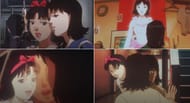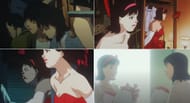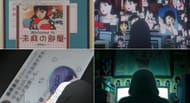Perfect Blue is a psychological thriller anime film released on February 28, 1998. It chronicles the struggles of idol-turned-television actress Mima Kirigoe, and her slow descent into madness due to a fan stalking her. It is also an excellent examination of the dark side of parasocial culture.
Whilst being a fan of mass media, sports, celebrities, and music— among other things— is socially acceptable, there are plenty of instances where the parasocial relationship between fans and the objects of their desires goes too far. Riots at sporting events, stalking celebrities, and death threats to writers and voice actors are only the tip of the proverbial iceberg.
To that end, Perfect Blue provides insight into what the victim of an intense parasocial relationship goes through. As Mima's situation escalates from a threatening fax to gruesome murders, the audience is put in the same situation as the character: questioning what's real and what isn't.
Disclaimer: The following article contains spoilers for Perfect Blue. Content warning for discussions and depictions of Dissociative Fugue and other mental health conditions, likewise with other topics like murder. All opinions are exclusive to the author.
Perfect Blue and its depiction of parasocial relationships
Parasocial Culture Defined
Sociologists Donald Horton and Richard Wohl coined the term "Parasocial Interaction" in 1956, focusing on radio, television, and movies. Though the term has seen much more use in the late 2010s, the idea of being attached to a fictional character, piece of media, or celebrity, is far older than the current social media climate.
Fans have parasocial relationships, from super fans of athletes like Michael Jordan and LeBron James, to fans of animation creators like Hayao Miyazaki or Genndy Tartakovsky. Extreme fan worship and extreme backlash predate the Internet.
Fans familiar with this can doubtlessly name plenty of examples over the past decade, such as the harassment faced by Gabi Braun's voice actress or riots over sports team victories. Perfect Blue depicts some gruesome ways parasocial interactions can manifest.
Perfect Blue's examples of extreme parasocial interaction
Perfect Blue features many examples of parasocial interactions going too far, starting with something simple and often overlooked. In the film's beginning, Mima's future stalker mimes holding her in his hands at her last idol performance. This escalates into threatening faxes and deep-breathing phone calls.
There are two moments in Perfect Blue where the horror escalates: the letter bomb at the Double Bind rehearsal and Mima's discovery of the "Mima's Room" fansite. The letter bomb explodes into threatening messages— a firecracker explosion that injures one of Mima's managers.
The "Mima's Room" fansite scene escalates the horror with each subsequent discovery. At first, it was just a fansite with a few quotes from her. Then the "journal entries" outline what specific grocery store she goes to, and the brand of fish food she gets, culminating in discovering a recording of her voice rehearsing her lines from earlier that day: "Excuse me, who are you?"
Perfect Blue's commentary on obsession via its stalker

Although Perfect Blue primarily focuses on Mima Kirigoe, it also showcases her stalker, Mamoru Uchida aka Me-Mania. A terrifying picture is formed of a man obsessed with his "perfect" image of Mima, and how it's being "defiled" by her becoming an actress and being involved in more risqué work.
Me-Mania is shown throughout the film going further: ripping up and defacing magazines showing Mima's nude photography sessions, clipping out images of her to hang all over his apartment, and filming her wherever he goes. His escalation to murder and the mystery behind the murders is no less horrific, culminating in his attempt to kill Mima.
Although Me-Mania isn't the mastermind in the film, his actions are reminiscent of entitled fans who take their entitlement to extremes. Both fiction and real life are littered with examples. An infamous fictional example was superfan Annie Wilkes from Misery kidnapping and hobbling author Paul Sheldon over her favorite character's death.
A real case of a fan killing their object of affection came from the case of Tejano singer Selena Quintanilla-Pérez in 1995. Selena was shot and killed by the president of her fan club, Yolanda Saldívar. The motive was determined to be an argument regarding Saldivar turning over financial records since Saldivar had been embezzling money from the fan club.
The theme of exploitation in Perfect Blue

Although an unintended theme of the film, according to director Satoshi Kon, Perfect Blue shows the further problem of how the entertainment industry exploits and packages people for consumption, and how that feeds into parasocial relationships.
Consider the following: throughout Perfect Blue, Mima's managers don't call the police even when the scriptwriter for Double Bind is found violently murdered. She's all but forced into filming a r**e scene, and then doing nude photography to increase her clout, having a breakdown afterward and continuing to spiral without anyone noticing or seeming to care.

In short, Perfect Blue is a scathing critique of fan entitlement and the industries that implicitly create the environment for it to fester. While fan entitlement certainly has gotten far more toxic owing to the rise of social media, so too have industries that create and attempt to maintain that entitlement.
The Japanese idol industry has come under fire for this problem. Anime like Perfect Blue, or Ohsi No Ko, showcases the darker sides of the glitz and glamour that's often pushed at audiences.
These darker sides include abrupt dismissals when idols aren't "young and fresh" anymore, grueling working conditions, forcing them to give up any personal life or romantic ambitions, and strict diets to enforce appearance standards.
Mima's identity crisis

The exploitation and careful crafting of identities is one of the ways Perfect Blue demonstrates how horrible the life of a star is. Mima has to constantly endure keeping up appearances, the paparazzi nearly breaking down her door in the aftermath of one of the murders, and her constant disassociating, and questions of her true identity.
The phrase "Excuse me, who are you?" (or "Who are you?" in the original Japanese)— the line Mima was rehearsing— proves an apt question. The audience is put into the same position that Mima is in throughout the film: distrusting everything about herself. Is she the idol? The struggling actress? Who is she, really?
Mima begins to disassociate and experience fugue states where she's in and out of conscious thought, even at one point hallucinating her character in Double Bind as her real life. Throughout the film, she sees her "perfect" idol self constantly mocking her choices. Even her encounter with the mastermind behind the murders has the mastermind appear as the "perfect" version.
The mastermind's psychosis

At the start of Perfect Blue, Rumi Hidaka seems like Mima's only friend in the world after Mima breaks away from the idol group CHAM! She's understandably uncomfortable with the idea of Mima doing the r**e scene, even smoking and storming out of the studio when they filmed it. Rumi always tried to help her out when others pushed Mima further into more racy acts.
It only makes the knife twist that Rumi was behind everything even worse: some of the more gruesome murders, the "Mima's Room" website, and radicalizing and brainwashing Me-Mania into murdering people. It all stems from her psychosis: she seeks to kill and replace Mima owing to a personality disorder she suffers from, where she believes herself to be Mima.
It gets all the scarier when Mima puts the pieces together when she's taken to Rumi's apartment, which is copied to resemble Mima's. In Perfect Blue's ending, Rumi is forever trapped in the delusion, institutionalized after trying to kill Mima. It's a sad case of trying to capture and preserve the "perfect" image of someone else.
Perfect Blue's relevance in the 2010s and onward

When Perfect Blue premiered in 1998, the Internet was not as commonly used as it is today. While fan sites and fan magazines still existed, if someone wanted to complain or send hate mail, there was a level of work involved. Access to the objects of affection or derision took effort and was limited.
As of the time of writing, this is no longer the case. Social media and internet anonymity, and the widespread use of algorithms that push "engagement" above all else, make it almost impossible to escape toxic fanbases and to maintain any form of privacy,
With streamers, VTubers, and other forms of internet celebrities rising to prominence over the past decade, parasocial interactions are still happening, and they tend to get ugly when taken too far. Stalking still happens, harassment campaigns are started over the slightest offense, and grifters that exploit the chaos are exhaustingly common.
Final thoughts

Above all else, Perfect Blue will be relevant for years to come. Parasocial relationships and entitled fans are around almost every corner online, the idol industry is still massively popular in Japan and South Korea, and the Internet offers more and more access to people's private lives.
A simple solution would be to learn how to behave as a fan. The harder solution is destigmatizing mental health and encouraging people to seek help, plus changing the entire system to abolish the idea of unattainable perfection.
Perfect Blue depicts the loss of identity and grip on reality from multiple angles: Mima's identity struggles, Rumi's assurance of her place as the "real" Mima, and Me-Mania's desire for "the real Mima." It ends with Mima confirming she's the "real thing" to herself and the audience, having finally moved on after months.
Related links:
- Where to watch Perfect Blue anime film? Streaming details explored
- Madhouse to screen Perfect Blue in 4k in celebration of its 50th anniversary
